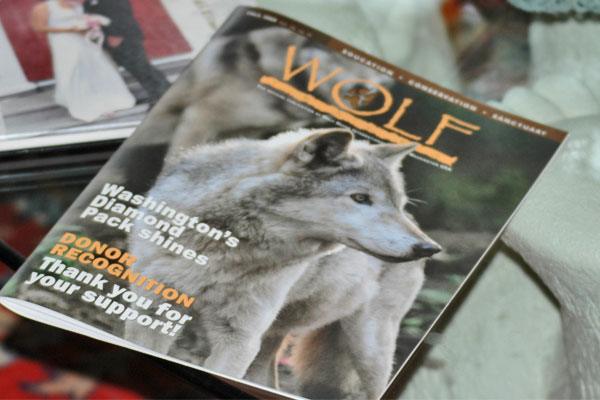Anyone with a camera can take a picture. It takes a photo- journalist to take images that tell stories.
Julie Lawrence is a photo-journalist. She also is the official photographer for Wolf Haven International in Tenino, south of Olympia.
Lawrence was studying art history in college when she realized that she should not be studying what others had done but rather developing art of her own. She changed to studio art and has been creating ever since.
Her first job out of college was for a wedding photographer. She did not
enjoy that and entered photo-journalism, using her camera to capture and tell stories.
As she and her art matured, Lawrence realized that wedding photography gave her chances to tell very special stories at significant times in people’s lives. Lawrence now makes her living as a wedding photographer who captures the emotions, both intimate and public, that surround weddings. She then produces a bound wedding book for the families. Each page has candid and posed shots that capture the individuals in new ways.
Always loved wolves
In her home, surrounded by her five cats, Lawrence says, "I’ve always loved animals and I’ve always loved wolves. When we moved to Washington in 1998, I got a chance to work at Wolf Haven. I felt it was such a gift to be around the wolves."
At the time, Lawrence worked for the Aberdeen Daily World as a photojournalist.
"When we moved here, so much was going on about wolves. They were being
reintroduced to Yellowstone, and some of the Mexican wolves were being released. I got caught up in it all."
Now Lawrence is the official photographer for Wolf Haven International. She spends two or three days every few months studying the wolves as they study her. She photographs them through the wire of their enclosures, being careful not to show the wire or any of the man-made structures that surround the wolves.
"I want to show them as wild animals in their natural habitat."
Watches and waits
The wolves’ comfort is primary to Lawrence so she sits quietly by the fence and lets the wolves sniff her equipment. She waits until they forget about her and go back to their routines. She does not use a flash.
Lawrence does yoga every day so she has the strength to hold the camera and long lenses as she waits for the perfect shots.
These are the shots that grace calendars, wolf books and Wolf Tracks, the
quarterly magazine she edits for Wolf Haven. Photos also are sent to each donor who "adopts" a wolf, along with updates on the animal.
Lawrence has researched the current and former wolf populations in Washington, and some of her research has been used by the state for restoring wolf populations to their historical ranges.
Wolf Haven International is an 80-acre preserve, and the wolves live on about half of that. They are kept in paired groups within half-acre enclosures. Most of the wolves have been altered so they cannot reproduce.
Bound for Mexico
None of Wolf Haven’s gray wolves will be released to the wild because they are dependent on people for their food and care. They would be dangers to themselves and to humans if they
were released.
However, some of the Mexican gray wolves from the sanctuary have been released in Arizona, and more are scheduled to be released in Mexico. These wolves have as little contact with humans as possible and they are housed in packs so they will know how to behave in the wild and be able to feed and care for themselves.
Before being released, the wolves are subjected to some adverse conditioning so they stay away from humans. Fear of people is the wolves’ greatest protection.
Information on Wolf Haven International can be found at WolfHaven.com.
Julie Lawrence’s photos can be viewed at Info@KittyMultiMedia.com. Lawrence will be one of the featured artists in March at the Blue Whole Gallery, 129 W. Washington St., Sequim.
Reach Dana Casey at dcasey@sequimgazette.com.



